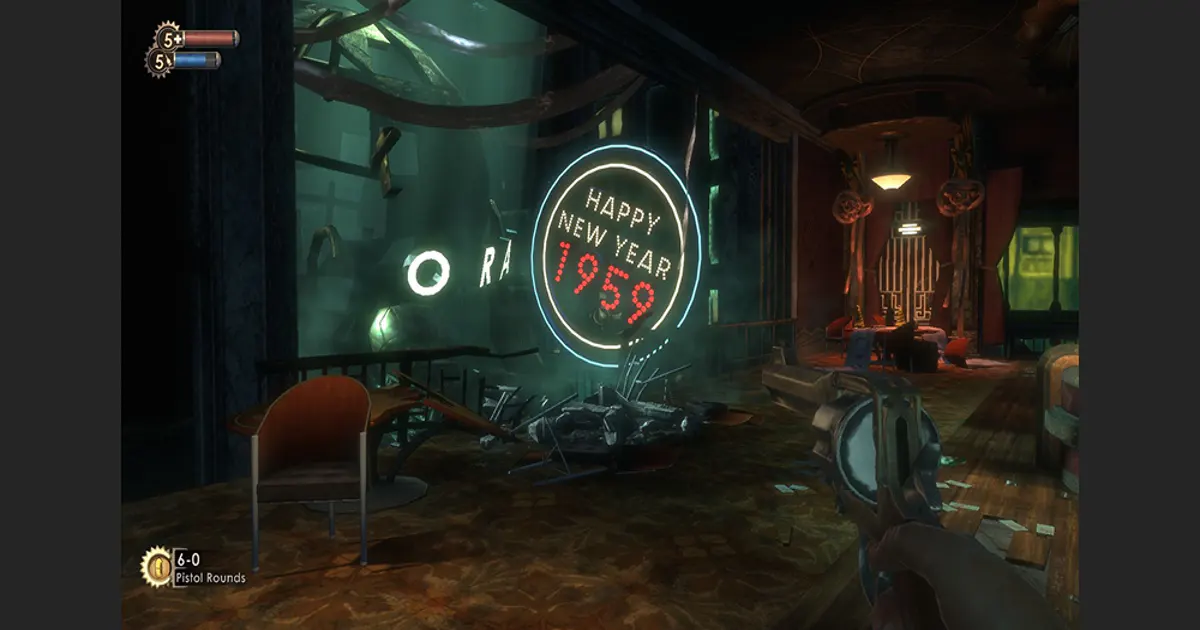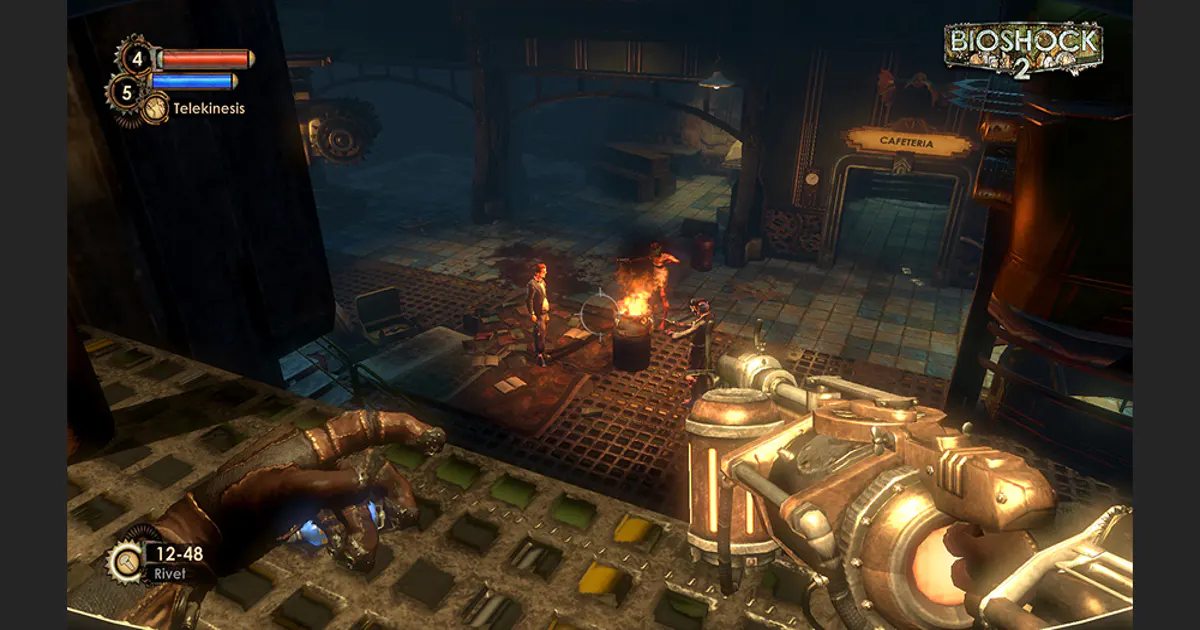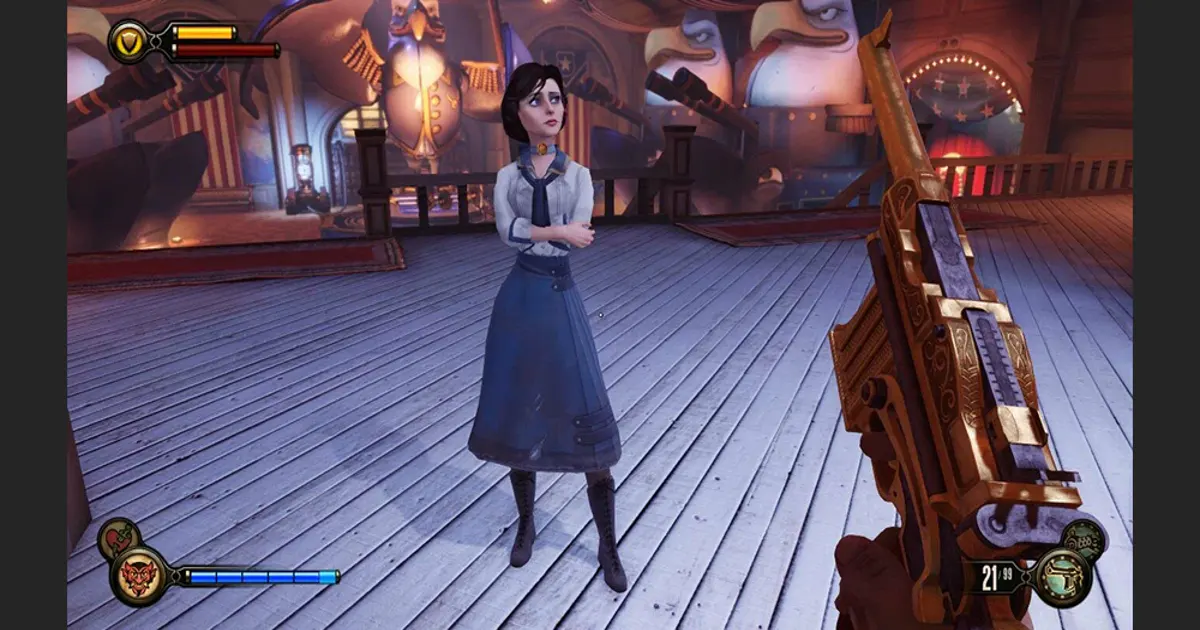BioShock Series Explained: Narrative, Aesthetics & Philosophical Themes
The BioShock series blends first-person shooter action with deep storytelling, exploring objectivism, free will, and religion. Discover the unique settings of Rapture and Columbia, the retrofuturistic art styles, and the philosophical questions at the heart of BioShock's acclaimed games.
The BioShock series is a legendary collection of video games (2007-2013) that blends first-person shooter gameplay with a deep narrative. The franchise stands out for its retrofuturistic aesthetic and exploration of complex themes, ranging from objectivism and free will to religious fanaticism. The first two games are set in the underwater city of Rapture, designed in an art deco and dieselpunk style, while the third installment transports players to the airborne city of Columbia, rich with steampunk atmosphere. Renowned for its philosophical undertones and moral dilemmas seamlessly woven into gameplay, BioShock invites players to reflect on ideology and choice. Below, we explore the three core titles-BioShock, BioShock 2, and BioShock Infinite-highlighting their narrative features, signature aesthetics (art deco, dieselpunk, steampunk), and key philosophical motifs (objectivism, free will, religion).
BioShock (2007)

The original BioShock introduced players to the dystopian utopia of Rapture-an underwater metropolis built in the 1940s by entrepreneur Andrew Ryan as a haven for free-thinking elites outside the reach of government and religion. The city's architecture features lavish art deco styling, while its technology and ambiance evoke dieselpunk, capturing the retrofuturism of mid-20th-century America. By 1960, this "paradise" has decayed into a dystopia: the discovery of ADAM-a substance granting superhuman abilities-fueled social inequality and genetic experimentation, leading to civil war and Rapture's collapse. The protagonist, Jack, finds himself amid the city's ruins, struggling to survive against deranged splicers and mechanical threats.
BioShock's philosophical core is Ayn Rand's objectivism, taken to its extreme in Andrew Ryan's ideology. The city's motto, "No gods or kings. Only man," and slogans like "Altruism is the root of all evil" reflect a cult of radical individualism. Ryan envisioned Rapture as a utopia where great individuals could create without moral or governmental restrictions, but the city's downfall exposes the flaws in these ideals. Themes of free will and manipulation are central; the iconic "Would you kindly..." twist reveals the protagonist's lack of true agency. BioShock earned critical acclaim for its innovative gameplay, immersive storytelling, artistic style, and thought-provoking ideas. Its unique visual identity-a retro Atlantis with neon signs, jazz music, and towering structures-created an unforgettable atmosphere of underwater dystopia.
BioShock 2 (2010)

BioShock 2 continues the story of Rapture, showing the city roughly eight years after the original game. Players take on the role of Subject Delta, a prototype Big Daddy-an armored guardian of the Little Sisters-and traverse the battered remains of Rapture in 1968. Power in the city's ruins has shifted to psychiatrist Sofia Lamb, whose philosophy starkly contrasts with Ryan's. While Ryan embodied extreme individualism and market-driven egoism, Lamb seeks a utopia of collective good-a collectivist cult called the "Rapture Family." She plans to use ADAM to merge the consciousness of all residents into a single being-a warped vision of altruism. Thus, BioShock 2 sets community against the individual, exploring the ideological conflict between Ryan and Lamb. The game's themes invoke collectivist philosophy-sacrifice for the greater good, echoing John Stuart Mill's utilitarianism and Karl Marx's ideas-in opposition to BioShock's libertarianism.
Aesthetically, BioShock 2 preserves Rapture's art deco grandeur but presents the city in terminal decay-cracked stained glass, leaking tunnels, and shell-encrusted facades reinforce the theme of a paradise lost. New design elements emerge, such as the agile and deadly Big Sisters, who visually blend elegance and menace in a retrofuturistic style. The story deepens the theme of fatherhood: the protagonist searches for his adopted daughter, Eleanor Lamb, and faces moral dilemmas-whether to spare key antagonists and rescue the Little Sisters or sacrifice them for power. These choices shape the game's ending, adding ethical depth without clear-cut answers. BioShock 2 was praised for its atmospheric setting, improved gameplay, and branching narrative, further exploring utopian extremes-selfishness versus self-sacrifice.
BioShock Infinite (2013)

BioShock Infinite lifts the action from the ocean floor to the skies, swapping Rapture's dark decadence for the dazzling city of Columbia, floating among the clouds. Set in 1912, the game is styled after the early 20th century: Columbia's architecture resembles an idealized American city at the turn of the century, blending Victorian decor with cutting-edge technology. The aesthetic is distinctly steampunk-floating islands, zeppelins, robotic patriots-all contributing to a utopia buoyed by balloons. Infinite consciously departs from Rapture's dieselpunk gloom, embracing vintage optimism above the clouds, continuing the franchise's retrofuturist tradition in a new context. The contrast is stark: Columbia is bathed in sunlight, painted in patriotic American colors, and filled with church choirs-appearing at first as a heavenly city above the earth.
Beneath Columbia's idyllic façade lie violent ideological extremes. The city is founded by the fanatic prophet Zachary Comstock, built on American exceptionalism and religious nationalism. The Founding Fathers are deified, biblical motifs abound, and the ruling Founders faction enforces racial segregation and a cult of Comstock as God's chosen. BioShock Infinite delves into themes of religion and messianism-Comstock declares Columbia a new Jerusalem and prophesies divine wrath. Through the city's design, the developers sharply critique chauvinism and dogmatism: this supposed utopia is, in truth, a dystopia rooted in racism, inequality, and violence.
The story follows former agent Booker DeWitt, sent to Columbia with the mission: "Bring us the girl and wipe away the debt." The girl, Elizabeth, has the power to open tears between parallel worlds, introducing the motif of multiple realities and fate. The game explicitly questions free will versus predestination: the "constants and variables" concept suggests some events are inevitable, regardless of universe. Booker and Elizabeth traverse alternate realities, showing how choices can lead to different outcomes, yet certain moments repeat. This device allows Infinite to tackle philosophical questions of responsibility and redemption; breaking the cycle of violence requires the protagonist to make a radical sacrifice for the future. Thus, BioShock Infinite blends sharp social satire (targeting militarism, religious cults, and ultranationalism) with personal drama and science fiction, expanding the series' thematic scope.
Main BioShock Games at a Glance
| Game | Release Year | Setting | Main Theme | Developer |
|---|---|---|---|---|
| BioShock | 2007 | Underwater city of Rapture | Objectivism, free will | Irrational Games (2K) |
| BioShock 2 | 2010 | Rapture (post-war ruin) | Collectivism vs individualism | 2K Marin |
| BioShock Infinite | 2013 | Sky city of Columbia | Religion, fate, freedom of choice | Irrational Games (2K) |
The Future of the Series: Awaiting the Next Chapter
Since the release of BioShock Infinite in 2013, the series' main storyline has been on pause, but interest in the BioShock universe remains strong. Fans and critics highlight the games' impact on the industry and continue to discuss the philosophical questions raised in the trilogy, much like the ongoing conversation about the evolution of Final Fantasy in a related genre. In December 2019, 2K officially announced the development of a new BioShock installment, entrusting the project to Cloud Chamber studio, with work expected to take several years. While details about the new game's story and setting remain scarce, the announcement confirms the series will continue to evolve. BioShock stands as a benchmark for artistic ambition in gaming, and its passionate community eagerly anticipates a return to a universe where philosophy and aesthetics blend into an unforgettable interactive experience.